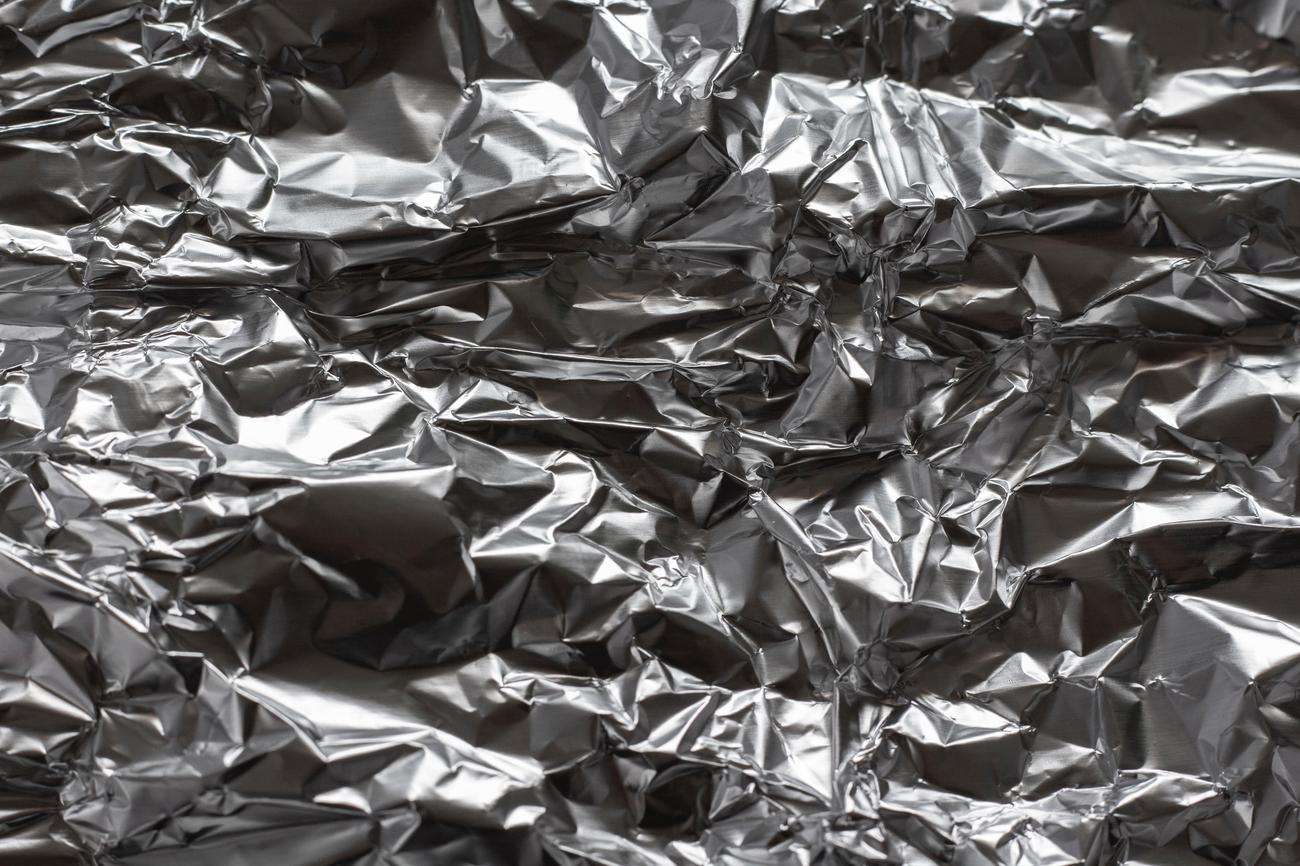Are you aware of the untapped eco-friendly potential of aluminum foil? This versatile material, commonly associated with food storage and kitchen convenience, has a myriad of sustainable uses that are often overlooked. In this article, we will delve deep into the world of aluminum foil and explore its surprising role in promoting sustainability. From innovative recycling techniques to creative upcycling ideas, get ready to uncover the sustainable uses that make aluminum foil a true champion in the fight against waste. Join us as we unveil the hidden potential of this eco-friendly hero.

Sustainable Uses of Aluminum Foil
Aluminum foil, a versatile and commonly used material, has a multitude of sustainable uses that can help reduce waste and promote a greener lifestyle. By exploring alternatives and adopting eco-friendly practices, we can harness the full potential of aluminum foil while minimizing its environmental impact.
Recycle, don’t waste
When it comes to aluminum foil, one of the simplest ways to be sustainable is to recycle it instead of throwing it in the landfill. Recycling aluminum foil helps conserve resources and reduces the need for raw materials. Remember, clean off any food residue before recycling to maximize the efficiency of the recycling process.
“Recycling aluminum foil is a small effort that can contribute to significant environmental benefits.”
Reduce and reuse
An essential aspect of sustainability is reducing our consumption. Consider reusing aluminum foil whenever possible to limit the amount we use. By gently wiping it clean and carefully folding it, we can extend its lifespan and minimize waste. This small step can have a significant impact on our ecological footprint.
“By reusing aluminum foil, we can take a proactive approach towards sustainability, one fold at a time.”
Explore eco-friendly alternatives
While aluminum foil is undoubtedly useful, we can also explore eco-friendly food storage options that minimize the need for it. Investing in reusable containers, beeswax wraps, or silicone food covers can help us reduce our reliance on aluminum foil. These alternatives not only have a lower environmental impact but also add a touch of creativity and style to our kitchen storage.
“By shifting towards eco-friendly food storage options, we can reduce our aluminum foil usage without compromising our culinary needs.”
Responsible packaging choices
Aluminum foil is commonly used for packaging various products, including food, cosmetics, and chemicals. When choosing products, prioritize those packaged in aluminum foil that can be easily recycled. By supporting brands that value sustainability in their packaging choices, we can encourage a circular economy and reduce waste.
“Being conscious shoppers empowers us to make environmentally responsible choices, supporting brands that prioritize sustainable packaging.”
Balancing benefits and concerns
Aluminum foil is known for its ability to keep food fresh and free of harmful bacteria when used as packaging. However, when using aluminum foil for cooking, it’s essential to be aware of potential safety concerns. Some research suggests that aluminum foil may release small amounts of aluminum into certain foods at high temperatures. To mitigate risks, consider using non-aluminum cookware alternatives for acidic or heavily spiced dishes.
“With aluminum foil, it’s crucial to balance the benefits of convenience and freshness with potential safety concerns.”
The environmental impact
Aluminum foil production has a significant environmental footprint due to factors such as bauxite mining, energy consumption, greenhouse gas emissions, and water contamination. Comparatively, plastic wrap offers certain advantages in terms of fossil fuel use, water pollution, and human health impacts. Striving for a balance between using aluminum foil and exploring eco-friendly alternatives can help reduce its overall environmental impact.
“By weighing the environmental impact of aluminum foil production, we can make informed choices about its usage.”
Unleashing creativity and resourcefulness
Beyond its traditional uses, aluminum foil holds immense potential for creative and sustainable applications. From crafting intricate sculptures to using it for household cleaning tasks, aluminum foil can offer endless possibilities. Embracing these alternative uses unleashes our creativity while minimizing waste, making it an eco-friendly choice.
“Discovering the unconventional uses of aluminum foil highlights our resourcefulness and showcases the sustainable nature of this flexible material.”
The infinite recyclability of aluminum foil
One of the most remarkable aspects of aluminum foil is its infinite recyclability. Unlike some materials that degrade when recycled, aluminum foil can be recycled repeatedly without compromising its quality. By properly disposing of aluminum foil in recycling bins, we contribute to a closed-loop system, conserving resources and reducing waste.
“Choosing to recycle aluminum foil ensures its journey from the kitchen to the recycling plant, and back again, creating an ever-lasting cycle of sustainability.”
In conclusion, aluminum foil offers us a wide range of sustainable uses, provided we adopt eco-friendly practices and make informed choices. By recycling, reducing consumption, exploring alternatives, and embracing creativity, we can tap into the eco-friendly potential of aluminum foil while minimizing its environmental impact.
“With each sustainable use of aluminum foil, we take a step closer to a greener future where resourcefulness and eco-consciousness go hand in hand.”
Aluminum foil is not just a kitchen staple; it hides a multitude of fascinating secrets. Did you know that aluminum foil was first produced in the early 20th century? It quickly became popular due to its versatility and affordability. However, there is much more to this shiny material than meets the eye. If you’re curious to learn more about the interesting facts about aluminum foil, click here for a mind-blowing revelation: interesting facts about aluminum foil. Brace yourself for surprising revelations about its history, production process, and innovative uses. Once you delve into the captivating world of aluminum foil, you’ll never look at it the same way again!

FAQ
Question 1
What are some eco-friendly uses for aluminum foil besides its traditional packaging role?
Answer 1
Aluminum foil has various sustainable uses beyond packaging. It can be repurposed for crafts or household cleaning tasks, reducing its environmental impact.
Question 2
Is aluminum foil recyclable?
Answer 2
Yes, aluminum foil is recyclable. Instead of throwing it in the landfill, please ensure to recycle it to reduce waste and promote sustainability. Remember to clean off any food residue before recycling.
Question 3
Are there any concerns regarding the safety of using aluminum foil for cooking?
Answer 3
While aluminum foil is commonly used for cooking, there may be safety concerns. It has the potential to leak into certain foods, so it’s advisable to use caution. Exploring eco-friendly alternatives like silicone baking mats or glass containers can be a safer choice.
Question 4
How does the production of aluminum foil impact the environment?
Answer 4
The production of aluminum foil has environmental consequences. It requires mining bauxite, which consumes energy and contributes to greenhouse gas emissions. Additionally, the production process can lead to water contamination.
Question 5
Is aluminum foil more or less eco-friendly compared to plastic wrap?
Answer 5
When considering fossil fuel use, water pollution, and human health impacts, aluminum foil is worse for the environment than plastic wrap. It’s important to balance the use of aluminum foil with eco-friendly alternatives to minimize its environmental impact.
- Unlock Water’s Symbolism: A Cross-Cultural Exploration - April 20, 2025
- Identify Black and White Snakes: Venomous or Harmless? - April 20, 2025
- Unlocking Potential: Origins High School’s NYC Story - April 20, 2025















